- Home
- Knowledge library
- Seed development in oilseed rape (GS7–GS8)
Seed development in oilseed rape (GS7–GS8)
Crop management needs to promote the development of a sufficient number of seeds. For a crop to reach its full yield potential, each seed needs to fill completely. Learn about these growth stages and how the crop’s environment influences each one.
Oilseed rape growth guide home
Canopy management in oilseed rape
Pod/seed (fruit) development in oilseed rape (GS7)
Elongated green pods develop from pollinated oilseed rape flowers. GS71 occurs when 10% of pods have reached their final size. GS79 occurs when more than 90% of pods have reached their final size.
Pod/seed (fruit) ripening in oilseed rape (GS8)
Within each pod, a central inner wall creates two compartments. The seeds develop in a row within each compartment. Once seeds have expanded to fill the pod cavity, ripening (of pods and seeds) starts. At first, seeds are soft and green (GS80). Seeds then turn brown and, at maturity, become hard and black. The crop continues to ripen, while leaves and stems start to senesce. The crop is classed as fully ripe when nearly all (> 90%) pods are ripe/seeds are dark and hard (GS89).
The role of seed number in yield
Seed number is a critical yield component. At least 100,000 seeds/m2 are required to achieve a yield of 5 t/ha. Photosynthesis during a 19–25-day period after mid-flowering determines seed set. Seed number is maximised by achieving an optimum pod number of 6,000 to 8,000 pods/m2. Crops with excessive pod numbers (e.g. >10,000 pods/m2) tend to have very thick canopies. Such crops have a lower rate of photosynthesis and this reduces seed set and the number of seeds per pod.
The role of seed weight in yield
For a crop to reach its full yield potential, each seed needs to fill completely. The rate of photosynthesis during the seed-filling period determines seed growth. Remobilisation of soluble carbohydrate (accumulated in the stem before flowering) also contributes to up to 10% of oilseed rape yield. Remobilisation is relatively low, compared with cereals (e.g. 20 to 50% in wheat).
Seed filling lasts for about 40 days. Most oil accumulates during the second half of seed filling. However, warmth, drought, disease or early desiccation all curtail the seed-filling period. Estimates suggest a yield reduction of 1–2% for each day of seed filling lost.
AHDB results show that 50% of oilseed rape crops may have insufficient roots below a depth of 40 cm to cope with dry conditions. In dry conditions, deep-rooted crops (i.e. beyond 1 m soil depth) are much more likely to have a significantly longer seed-filling period.
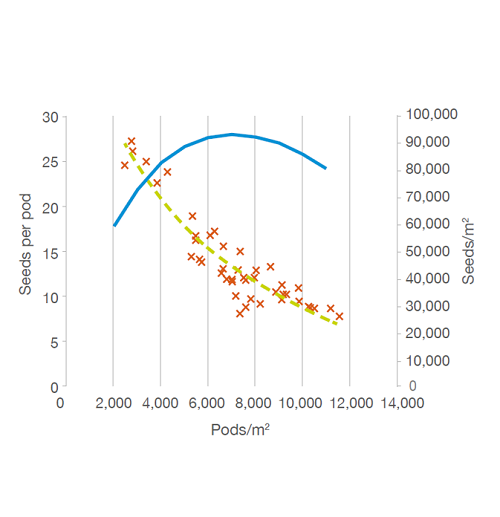 AHDB
AHDB
The effect of pod number on the number of seeds per pod and seeds/m2
 AHDB
AHDB
Seed number and seed weight, and combinations of seed number and seed size required to achieve a yield of 3, 4 or 5 t/ha
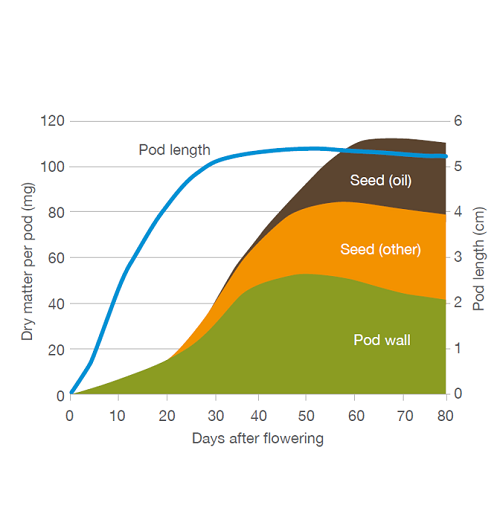 AHDB
AHDB
Pod length and typical biomass and oil accumulationin the pod wall and seed from flowering
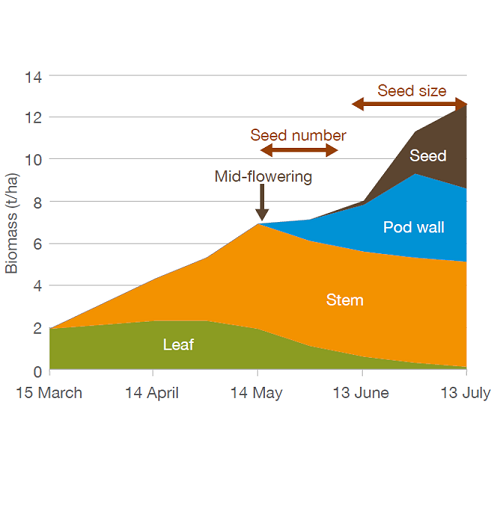 AHDB
AHDB
Biomass accumulation in a typical oilseed rape crop and key periods for determination of seed number and seed size
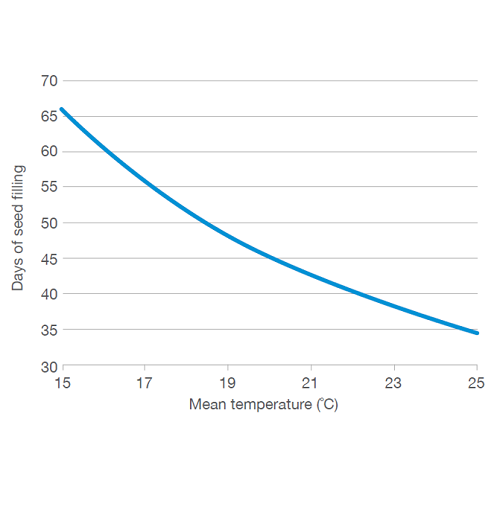 AHDB
AHDB
The effect of temperature on the duration of seed filling


.PNG)
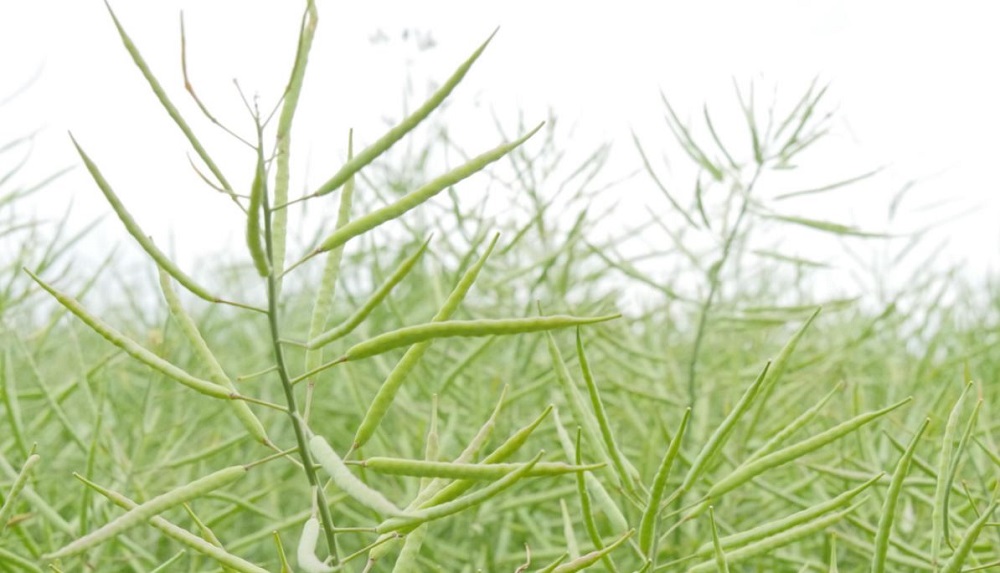
 symptoms in oilseed rape.jpg?v=637780328790000000)